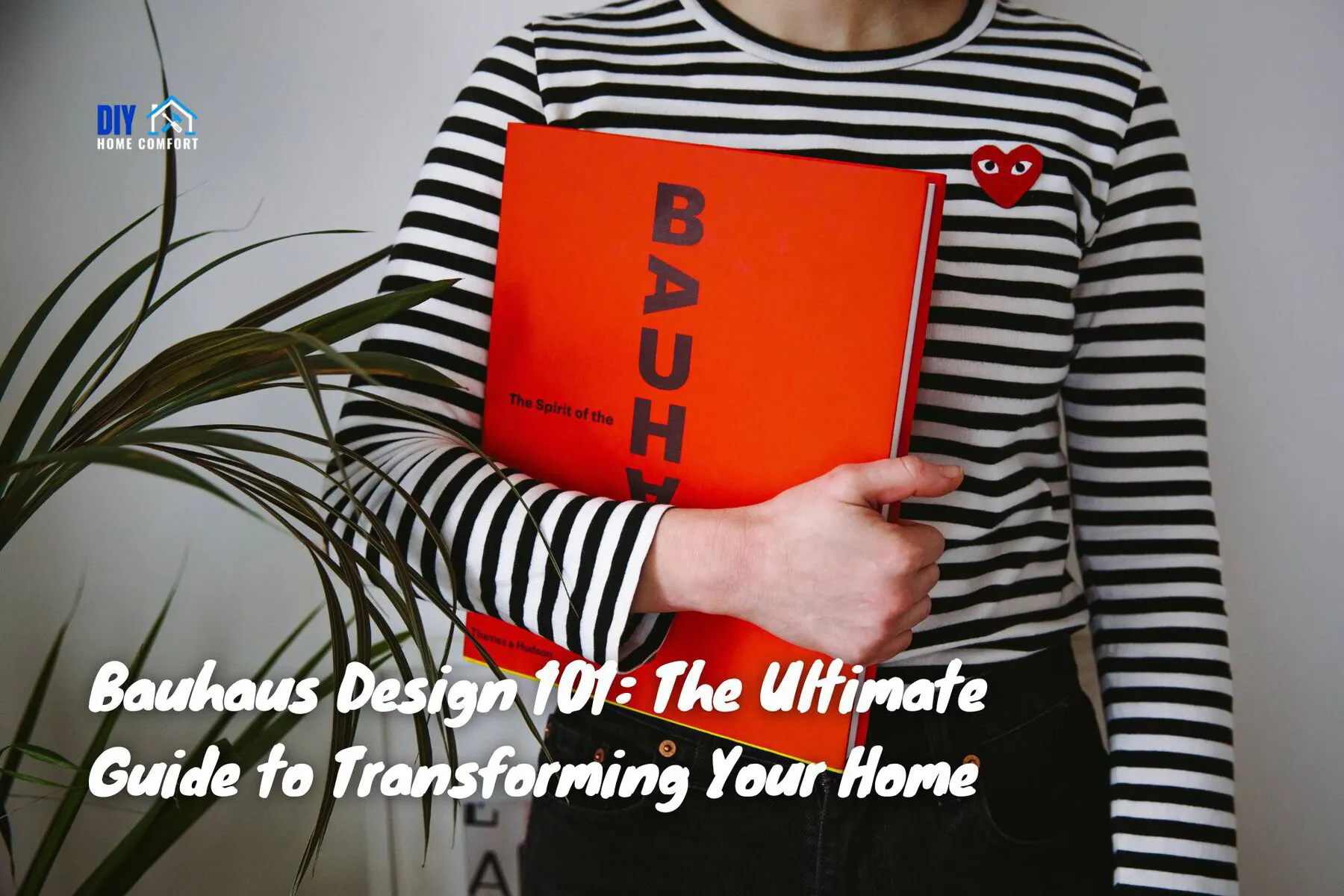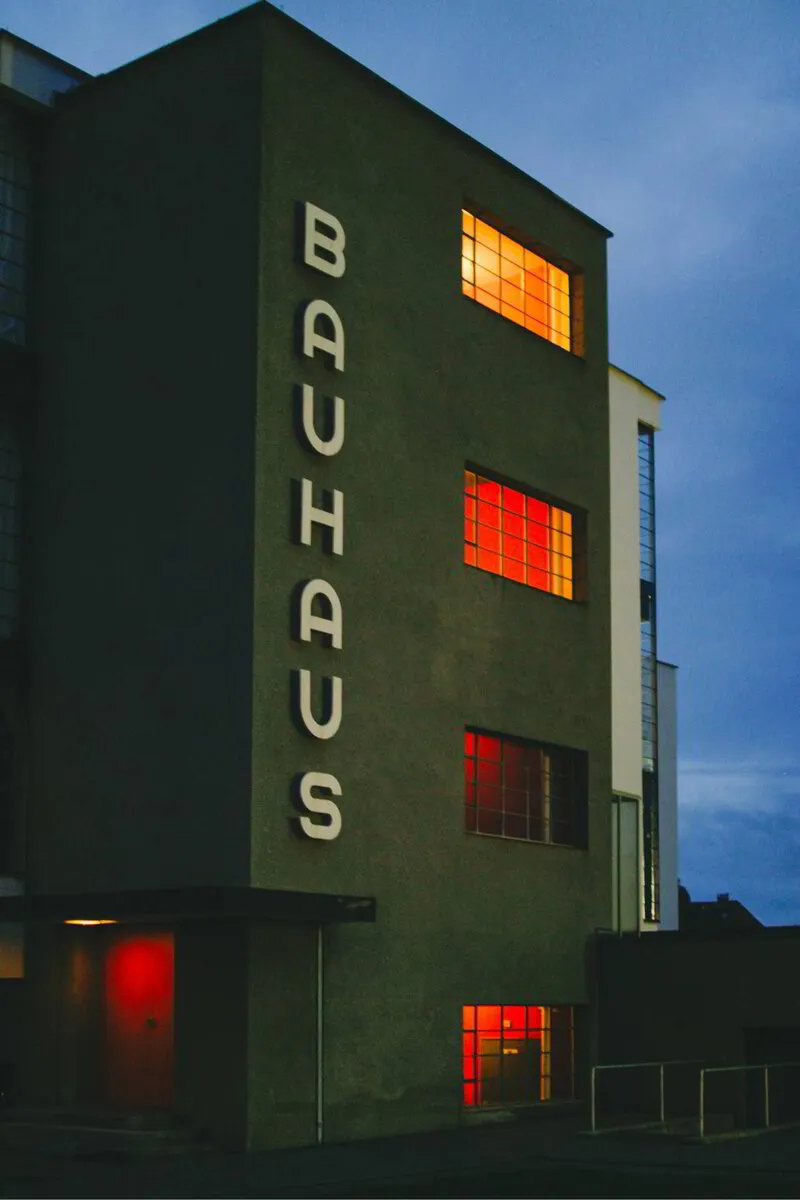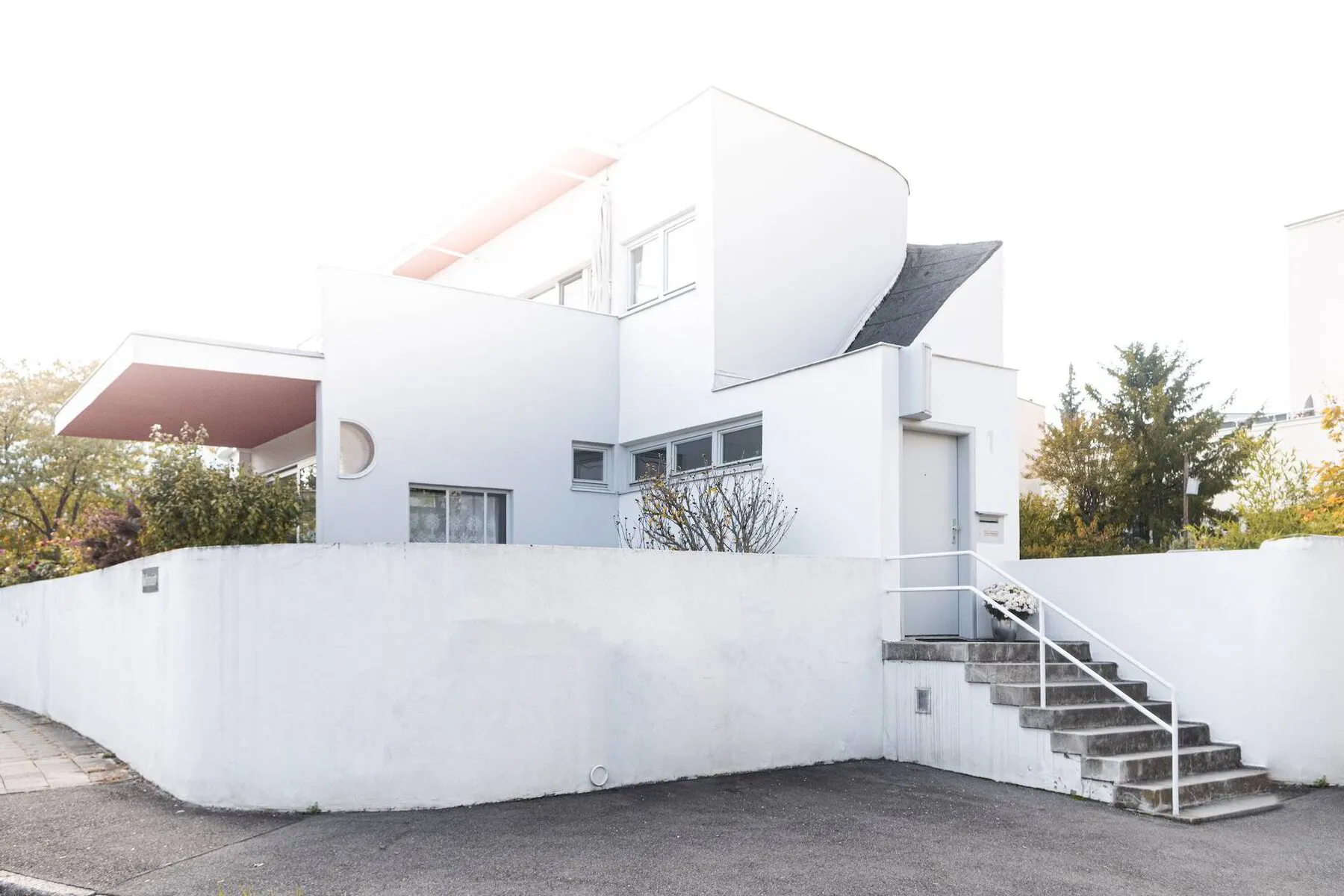Are you tired of the same old mundane design of your home? Do you want to bring in a unique and innovative style that is both functional and appealing? Then Bauhaus design is your way to go!
In this ultimate guide, we will take you through the history, elements, and principles of Bauhaus design and how to incorporate it into your home.
Join us on this journey of transforming your home into something extraordinary!
📘 Key Takeaways
- Bauhaus design, originating in Germany in 1919, emphasizes functionality, simplicity, and minimalism, revolutionizing modern design.
- Founded by Walter Gropius, the Bauhaus School combined art, craft, and technology, laying the foundation for modernism in design.
- Key elements of Bauhaus design include clean lines, geometric shapes, and the innovative use of industrial materials.
- Incorporating Bauhaus principles into home design ensures a blend of functionality and aesthetic appeal, reflecting both tradition and modernity.
- Bauhaus design continues to influence contemporary architecture, showcasing its enduring relevance in the design world.
The Origins of Bauhaus Design
Bauhaus started in Germany in 1919 with the founding of the Bauhaus School by German architect Walter Gropius. The school aimed to bring together art, craft, and technology to create practical and functional designs that could be easily replicated for mass production.
This approach was revolutionary at the time and paved the way for modernism, which embraced simplicity and functionality over ornate details.
The Bauhaus School was founded in Weimar, Germany, and later moved to Dessau and then Berlin. It was a response to the changing times and the need for a new approach to design.
The school was influenced by the Arts and Crafts movement, which emphasized the importance of craftsmanship and traditional techniques, but it also embraced the new technologies and materials of the industrial age.
The Founding of the Bauhaus School
Walter Gropius was a visionary architect who believed that design should be accessible to everyone, not just the wealthy. He wanted to create an art education school that would bring together artists, designers, and craftsmen to work together and share ideas.
Gropius believed that by combining different disciplines, they could create designs that were both beautiful and functional. The Bauhaus School was founded with the idea of creating a new type of designer, one who could work with both their hands and their minds.
The curriculum was based on the idea of "learning by doing," and students were encouraged to experiment with different materials and techniques.
The school offered courses in painting, sculpture, architecture, typography, and industrial design.
Key Principles and Philosophies
The Bauhaus movement had a few key principles that it followed, including the use of industrial materials, simplicity, functionality, and form following function.
These principles were driven by the philosophy that art and craft should have a purpose and be useful. Bauhaus designers believed that form should always follow function and that beauty could be found in simplicity.
The Bauhaus School also had a strong emphasis on collaboration and teamwork. Students were encouraged to work together on projects and share their ideas.
This approach helped to break down the traditional barriers between different disciplines and created a more holistic approach to design.
Influential Bauhaus Artists and Designers
The German School attracted many influential artists and designers, such as Josef Albers, Paul Klee, and Wassily Kandinsky. These individuals helped shape the aesthetics of the movement and its focus on minimalism, geometric shapes, and bold colors.
Their designs are still relevant today and have influenced many contemporary designers.
Josef Albers was a painter, designer, and teacher who taught at the Bauhaus Design School from 1923 to 1933. He was known for his innovative use of color and his exploration of the relationship between color and form.
Paul Klee was a Swiss-German artist who taught at the Bauhaus School from 1921 to 1931. He was known for his playful use of color and his experimentation with different materials and techniques.
Wassily Kandinsky was a Russian artist who taught at the Bauhaus School from 1922 to 1933. He was known for his abstract paintings and his exploration of the spiritual aspects of modern art.
These artists and designers helped to create a new approach to design that emphasized simplicity, functionality, and collaboration. Their legacy can still be seen today in the work of many contemporary designers who continue to be inspired by the Bauhaus movement.
Minimalism and Functionality
The Bauhaus philosophy of design was based on the idea that less is more. Designs were stripped down to their essential elements, and unnecessary ornamentation was avoided.
This approach was not only aesthetically pleasing but also practical, as it allowed for efficient production and use of materials. Functionality was also a key aspect of Bauhaus style.
Designs were made to be practical and serve a purpose rather than just being decorative. This approach to design was influenced by the growing industrialization of society and the need for products that were efficient and useful.
Geometric Shapes and Forms
Geometric shapes and forms were heavily used in Bauhaus, especially squares, circles, and triangles. These shapes helped to simplify designs and give them a more modern look.
Bauhaus designers also explored the use of asymmetry and negative space in their work, creating designs that were dynamic and visually interesting.
The use of modern materials, such as steel and glass, also contributed to the geometric aesthetic of Bauhaus. These materials allowed for the creation of sleek, minimalist designs that were both functional and visually striking.
The Use of Color in Bauhaus Design
Colors were used sparingly in Bauhaus, with a focus on bold primary colors such as red, blue, and yellow. These colors were used to create contrast and draw attention to specific elements in the design.
The use of black and white was also common, which helped to bring out the stark contrast between different shapes and elements. Bauhaus designers also experimented with color theory, exploring the psychological and emotional effects of different colors.
They believed that colors could be used to create moods and convey messages, and this approach to color continues to influence design today.
Typography and Graphic Design
Bauhaus designers were also pioneers in the field of typography and graphic design. They created fonts that were easy to read and designed with functionality in mind. The use of sans-serif fonts, such as Futura and Helvetica, became a hallmark of the Bauhaus aesthetic and typography.
Bauhaus designers also explored new ways to use graphic design to communicate messages, such as posters, logos, and advertisements. They believed that design should be accessible to everyone and that it could be used to promote social and political causes.
This approach to design as a tool for communication and social change continues to be influential today.
Choosing the Right Furniture
When it comes to furniture, aim for designs that are sleek and minimal. Look for pieces with clean lines and geometric shapes, and try to avoid ornate details or excess decoration.
Furniture made from industrial materials such as metal or glass can also work well in creating a Bauhaus-inspired look. Consider investing in a sofa or chair with a simple, streamlined design.
A leather sofa with clean lines and minimal detailing, for example, would be a great addition to a Bauhaus-inspired living room. Or, opt for a glass coffee table with a geometric base to add a touch of industrial style to your space.
Selecting Bauhaus-Inspired Lighting
Lighting is an important element in the Bauhaus style, as it helps to highlight the essential elements of the design. Look for light fixtures with simple shapes and clean lines, and consider using colors to create contrast.
A pendant light with a geometric shape, for example, would be a great addition to a Bauhaus-inspired dining room. Or, consider a floor lamp with a sleek, minimal design to add a touch of industrial style to your space. An essential lamp design could also add the final touch.
Incorporating Bauhaus Art and Decor
Bauhaus art and decor can add depth and visual interest to a space. Consider adding art prints or geometric sculptures that reflect the movement's aesthetic. Look for pieces that are simple and functional yet still visually appealing.
A simple black-and-white print with a geometric design would be a great addition to a Bauhaus-inspired bedroom. Or, consider a sculpture with clean lines and a minimalist design to add a touch of industrial style to your space.
Creating a Cohesive Bauhaus Color Scheme
The color scheme of a room is an essential element of any design, including the Bauhaus designs. Stick to primary colors such as red, blue, and yellow, and use white or black to create contrast.
Consider painting a feature wall in a bold primary color to add a touch of Bauhaus style to your space. Or, opt for a rug with a geometric design in primary colors to tie the room together.
With these key elements in mind, you can easily incorporate Bauhaus into your home. Remember to keep things simple, functional, and visually appealing, and you'll have a space that reflects the iconic style of this revolutionary design movement.
Bauhaus Design in Modern Architecture
Bauhaus design has had a significant impact on contemporary architecture. The principles of Bauhaus design were revolutionary at the time, and they continue to influence contemporary architecture.
The focus on clean lines, geometric shapes, and the use of industrial materials such as steel and concrete is reflected in many modern buildings today.
The Influence of Bauhaus on Contemporary Buildings
The influence of Bauhaus design can be seen in the architectural style of many contemporary buildings around the world.
Famous examples include the Farnsworth House by Ludwig Mies van der Rohe and the Barcelona Pavilion by the same architect. Both of these buildings feature simple, geometric shapes and a minimalistic aesthetic.
Other buildings that draw inspiration from Bauhaus design include the Gropius House in Massachusetts, which was designed by Walter Gropius himself.
This house is a prime example of Bauhaus architecture, featuring clean lines, an emphasis on functionality, and an open-plan layout.
Bauhaus design has also been used in the interior design of museums, schools, and even some commercial office spaces. The use of industrial materials and simple, functional design elements creates a sense of modernity and efficiency in these Bauhaus buildings.
Iconic Bauhaus-Inspired Structures
One of the most iconic Bauhaus-inspired structures in the world is the Bauhaus Building in Dessau, Germany. This building was designed by Walter Gropius in 1925 and served as the headquarters of the Bauhaus art school until it was closed down by the Nazis in 1932.
Today, the building is a UNESCO World Heritage Site and serves as a museum dedicated to the Bauhaus movement.
Another iconic Bauhaus-inspired area is Tel Aviv White City in Israel. This area of the city features over 4,000 buildings designed in the Bauhaus style, making it the largest collection of Bauhaus architecture in the world.
The buildings were constructed in the 1930s by German Jewish architects who had fled Nazi Germany.
The Future of Bauhaus Design in Architecture
Bauhaus design has continued to be influential in architecture, and it will likely keep on inspiring contemporary designers for years to come. The movement's emphasis on simplicity, functionality, and minimalism remains relevant and appealing in modern design.
As society becomes more focused on sustainability and efficiency, the principles of Bauhaus design are likely to become even more important in the design of buildings and public spaces.
Bauhaus Style Principles
Incorporating Bauhaus design into your home can be both exciting and intimidating. However, keeping in mind the principles and elements mentioned in this guide will surely be helpful. So what are you waiting for?
Get ready to transform your home into something that is both functional and beautiful with the help of Bauhaus design.
Functional Design
Another important element of Bauhaus design is functionality. Your home should be designed in a way that is practical and efficient, with everything having a specific purpose.
This means that you should focus on creating a layout that allows for easy movement and access to all areas of your home.
Color Theory
When it comes to color, Bauhaus interior design favors bold and contrasting hues. You can incorporate this by choosing a color palette that includes bright primary colors, such as red, blue, and yellow.
You can also add pops of color through artwork and accessories.
Texture
Texture is another element that can be used to add interest to your space. Bauhaus design favors materials such as glass, metal, and concrete, which can be used to create a modern and industrial feel.
You can also incorporate natural materials, such as wood and stone, to add warmth and texture to your home.
Lighting
Finally, lighting is an important aspect of Bauhaus interior design. Your home should be well-lit with a variety of light sources, including natural light, overhead lighting, and task lighting.
This will help to create a comfortable and inviting atmosphere while also highlighting the unique features of your space.
The Final Word
By incorporating these principles and elements of Bauhaus design into your home, you can create a functional and beautiful space. So why not try it and see the difference it can make in your everyday life?
And if you want to learn more about interior design and its exciting possibilities, don't forget to check out the rest of our interior design blog!
Thanks for reading!
📘 Related Reading: Peeking Into The Past: Unraveling The History Of Interior Design
Lara Harding
Lara is a supporting author @ DIY Home Comfort. She's an experienced interior designer and decorator and a full-time mom. You can find out more about her here.







